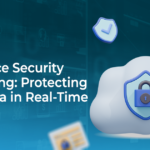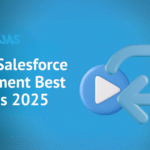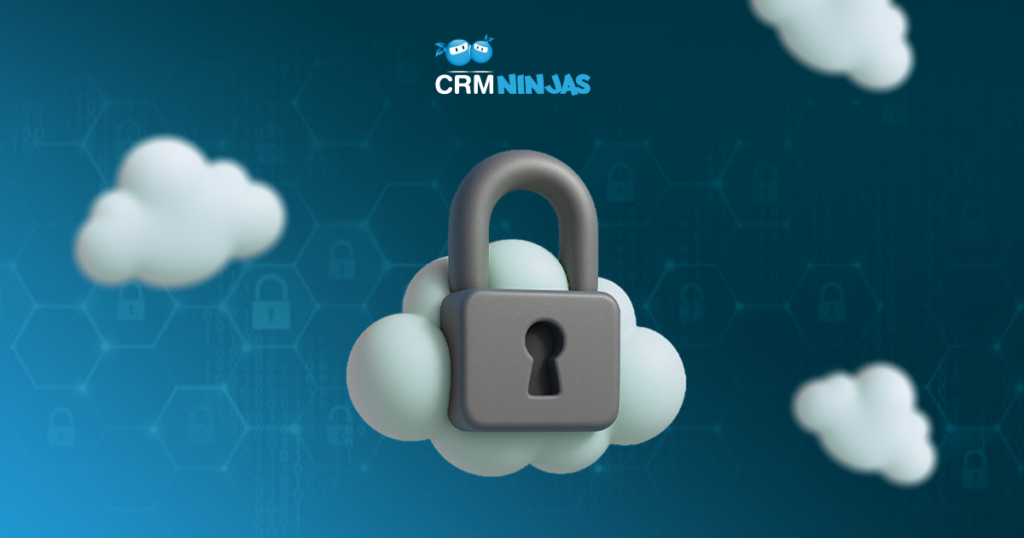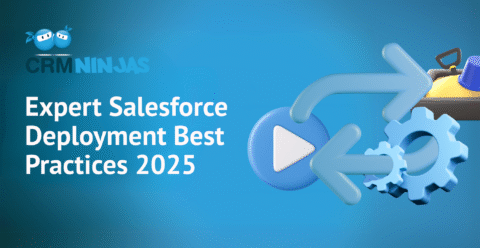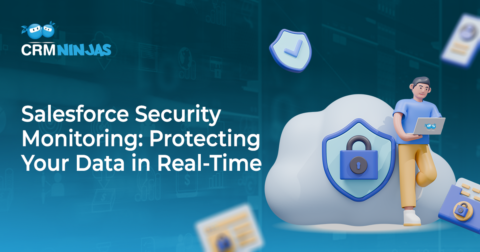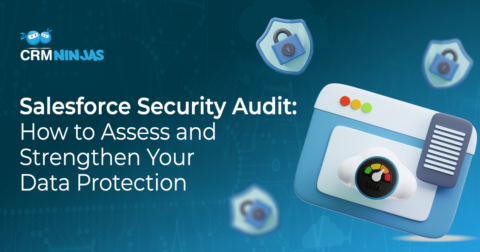Why cloud data security isn’t automatic — and what to do about it.
A lot of people assume if their data is in the cloud, it’s automatically safe. There is a good reason for that — Salesforce is a secure platform. But let me be clear: Your org is only as secure as the way it’s set up. Following Salesforce data security best practices is still mandatory.
I’ve seen too many businesses treat data and data security as an afterthought and let their guard down, only to find out later they had wide-open permissions, outdated settings, or risky integrations exposing critical data.
In this post, I’ll walk you through the steps we use daily with clients. Real steps. Real fixes. No fluff.
Let’s dive in.

Expert Help to Safeguard Your Data
CRMNinjas’ security solutions put professionals in your corner to reinforce your operations and make your Salesforce instance airtight.
Salesforce Data Security Best Practices
CRMNinjas’ 6-Step Approach
When we’re brought in to audit a Salesforce org, it usually doesn’t take long to spot the issues.
The most common problems? Too much access, no monitoring, and almost zero attention to the platform’s security updates.
Here’s how we fix that — and how you can, too.
1. Limit Admin Access
This is the big one. Most orgs we walk into have way too many users with admin rights. It’s chaos.
You want to set up your Salesforce security so that each user has the minimum amount of access required to do their job.
It sounds simple, but it’s rarely done right.
When everyone has admin access, bad things happen — whether it’s accidental changes, data loss, leaks, or compliance headaches.
So, if you haven’t already tightened this one aspect down. Stop what you’re doing, and go lock it down. Give people only what they need to get their work done.
2. Don’t Ignore Your Quarterly Security Updates
You’d be surprised how many companies miss this.
Salesforce rolls out quarterly updates that often include critical security enhancements—yet most admins skim right past them. Keeping up with these releases helps you stay ahead of potential threats. a
If you’re not sure where to start, here’s how to check what’s pending and take action:
How to activate critical updates in Salesforce:
- Go to Setup.
- In the Quick Find box, type “Release Updates” and select it.
- You’ll see a list of upcoming Critical Updates.
- You can also check the Due Soon and Overdue tabs.
- Each update includes a description, impact details, and activation timeline.
- Click Get Started next to any update to review and apply it.
We recommend checking this page at least once a quarter and activating anything relevant. If you’re not sure what an update will affect, we can help assess the impact before you pull the trigger.
Browsers get updated all the time. Security vulnerabilities get found all the time. Don’t ignore your updates.
3. Enable Multi-Factor Authentication (MFA)
In the event sensitive information is compromised, multi-factor authentication can be your saving grace.
If you haven’t verified or reviewed Multi-Factor Authentication (MFA) recently, it’s easy to do and ensure access is airtight. Salesforce already requires it in many cases, but orgs sometimes have implemented exemptions based on user type.
MFA is automatically enabled for production orgs.
To enable MFA for all internal users in your org:
- From Setup, in the Quick Find box
- Enter Identity, and then select Identity Verification.
- Select Require multi-factor authentication (MFA) for all direct UI logins to your Salesforce org.
4. Monitor Logins and Data Exports
You can’t protect what you’re not watching. Use Salesforce’s Event Monitoring tool or login history reports to track:
- Suspicious logins
- Unusual IP addresses
- Large data exports
This helps catch potential threats early — before they become problems.
Large data exports are one of the most common risks — especially when users resort to Excel. Here’s why the risks of exporting Salesforce data to Excel are often underestimated..
5. Train Employees on Security Awareness
The biggest threat to your Salesforce org? Human error.
It just takes one team member falling for a clever phishing scam to compromise your data.
That’s why we always push for regular security awareness training—especially around recognizing suspicious emails. This goes hand hand-in-hand with improving Salesforce user adoption.
Not once every couple of years, but consistently.
6. Schedule Regular Security Audits
We recommend doing some level of a formal Salesforce security audit at least twice a year. This keeps your settings, user roles, and integrations in check—and gives you a chance to clean house before things slip out of control.
Work these into your annual planning beforehand. If it’s something that’s being left up to convenience, more often than not, they won’t happen.
Ready to Lock Down Your Salesforce Org?
If any of this hits a little too close to home, you’re not alone. Most Salesforce orgs are more vulnerable than they seem—and most teams don’t realize it until something breaks.
CRMNinjas specializes expert Salesforce administration, helping businesses like yours audit, secure, and manage their Salesforce environments — without the overhead of hiring full-time admins. Whether you need help locking down permissions, monitoring user activity, or implementing Salesforce Shield, we’ve got the tools and experience to make it happen.
Let us help you take the guesswork out of Salesforce security. Get a free Salesforce security audit.
